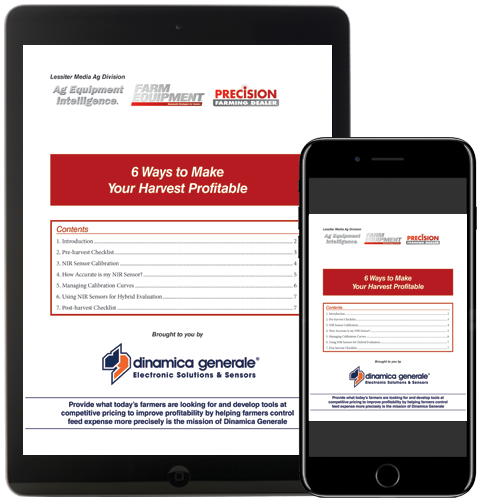
NIR Sensors are a well-known technology that allow producers and contractors to analyze crops and slurry. By recording moisture and nutrients instantaneously along with a GPS location, NIR Sensors with real time mapping systems produce a visual grid of quality trends across fields. When collected and analyzed over multiple years, NIR data can support changes in crop management practices that result in increased yields and reduced variability.
This free eGuide, will help you implement best management practices for using NIR systems and steer you away from common mistakes.
Download “6 Ways to Make Your Harvest Profitable” for FREE and use as a reference for NIR Analysis operation and calibration.
In this FREE eGuide you’ll learn how to properly calibrate and ensure your NIR Sensor is accurate to help avoid:
- Sampling Errors: calibrations are used as predictive models. Errors can be caused by both sample presentation as well as poor sample homogeneity. Without good spectra, predictions will be wrong.
- Maintenance Problems: NIR sensors that accumulate debris in front of the sensor can result in accuracy errors or damages to the glass. Additionally, poor maintenance of the reading glass results in either significant mechanical vibrations or poor flow through the NIR sensor that can negatively affect NIR sensor accuracy.
Plus, you’ll see post-harvest checklist items that are important to spend a few hours on, including downloading the harvest data, preparing your NIR sensor for long term storage and more!
Download this eGuide TODAY and be on your way to a more profitable harvest season!
Discuss
What new insights did you gain? What jumped out at you? Share your observations.
